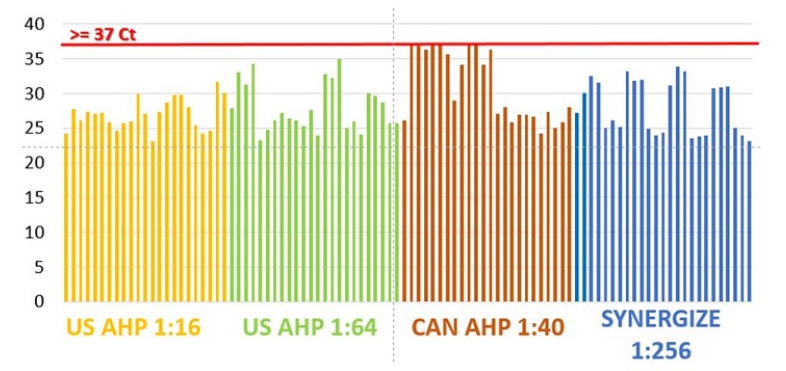



PCR falls short in monitoring PRRSV transport biosecurity
Transport biosecurity is a growing priority as evidence shows that contaminated livestock trailers are a significant risk in spreading viruses between herds. But reliable tests to confirm biosecurity compliance and effectiveness to inactivate viruses has been a challenge.PCR tests are often used to monitor trailer sanitation and decontamination, but the results can be difficult to interpret. “For example, a positive-PCR test for PRRSV doesn’t tell you if the virus is infectious or if it’s just present but has been deactivated,” said Rita Neat, Iowa State University (ISU) veterinary student. “So, you can’t tell if your biosecurity measures have been effective, which means you can only be confident in a negative test.”
She designed a study to evaluate whether washing, disinfection and Thermal-Assisted Drying and Decontamination (TADD) protocols would consistently produce a negative-PCR test for PRRSV, which could be used to monitor trailer biosecurity compliance.1
Replicating the transport setting
For the study, she used 144 diamond-plate aluminum trays (4’ x 4’ x ½”) to replicate a livestock trailer’s floor. The trays were contaminated with of 2 mL of phosphate buffered saline (PBS) or PRRV-negative feces, which were then spiked with 2 mL of PRRSV (VR-2385). Negative controls received un-spiked PBS or feces. All of the trays were swabbed as a pre-treatment measure.
The next phase involved 48 treatment groups with three replicates each. The disinfectants evaluated included:
- An accelerated hydrogen peroxide (AHP) disinfectant licensed in the US (Intervention®) at 1:16 or 1:64 dilutions.
- An AHP disinfectant licensed in Canada (Prevail®) at 1:40 dilution.
- A quaternary ammonium and glutaraldehyde combination disinfectant (Synergize®) at 1:256 dilution.
- The negative controls received a sham disinfectant (PBS)
Contact time for the disinfectants was either 5 minutes or 60 minutes at -10°C (modeling winter) or 20°C (modeling summer). To simulate TADD under field conditions, all trays were then heated to 71°C and held for 10 minutes.
Post-treatment swabs were collected on all trays and were sent, along with pre-treatment swabs, to the ISU Veterinary Diagnostic Laboratory for quantitative real-time PCR for PRRSV.
PCR alternatives needed
As for the results, all treatment groups came back PCR-positive for PRRSV, but not all replicates came back PCR-positive, Neat pointed out. The negative controls came back negative. The disinfectant contact time or temperature produced no significant results.
Figure 1. Post-treatment cycle threshold of disinfectant groups
The chart indicates the post-treatment cycle threshold (Ct) of disinfectant groups. Ct values are found on the Y-axis and red line indicates the 37 Ct cutoff, which indicates a negative test. Only replicates in the Canadian AHP 1:40 group came back negative, however not a single treatment group was consistently negative. All treatment groups came back positive after modeling the washing, disinfecting and TADD procedures.
“The disinfectant and the exposure medium – feces or PBS – did have an impact on the reduction of genomic copies of PRRSV from pre-treatment to post-treatment,” Neat added. “However, I did not find washing, disinfectant or TADD conditions that produced consistent negative-PCR results. Therefore, for the purpose of monitoring trailer contamination, decontamination and sanitation protocols, alternative to PCR should be explored.”
References:
1 Neat R, et al. Evaluation of washing-disinfectant-TADD conditions required to produce a negative PCR result when monitoring the presence of PRRSV on metal surfaces. Student Seminar, 49th American Association of Swine Veterinarians’ Annual Meeting. 2018;83.










